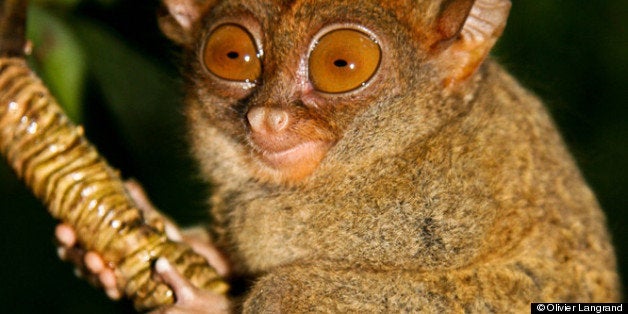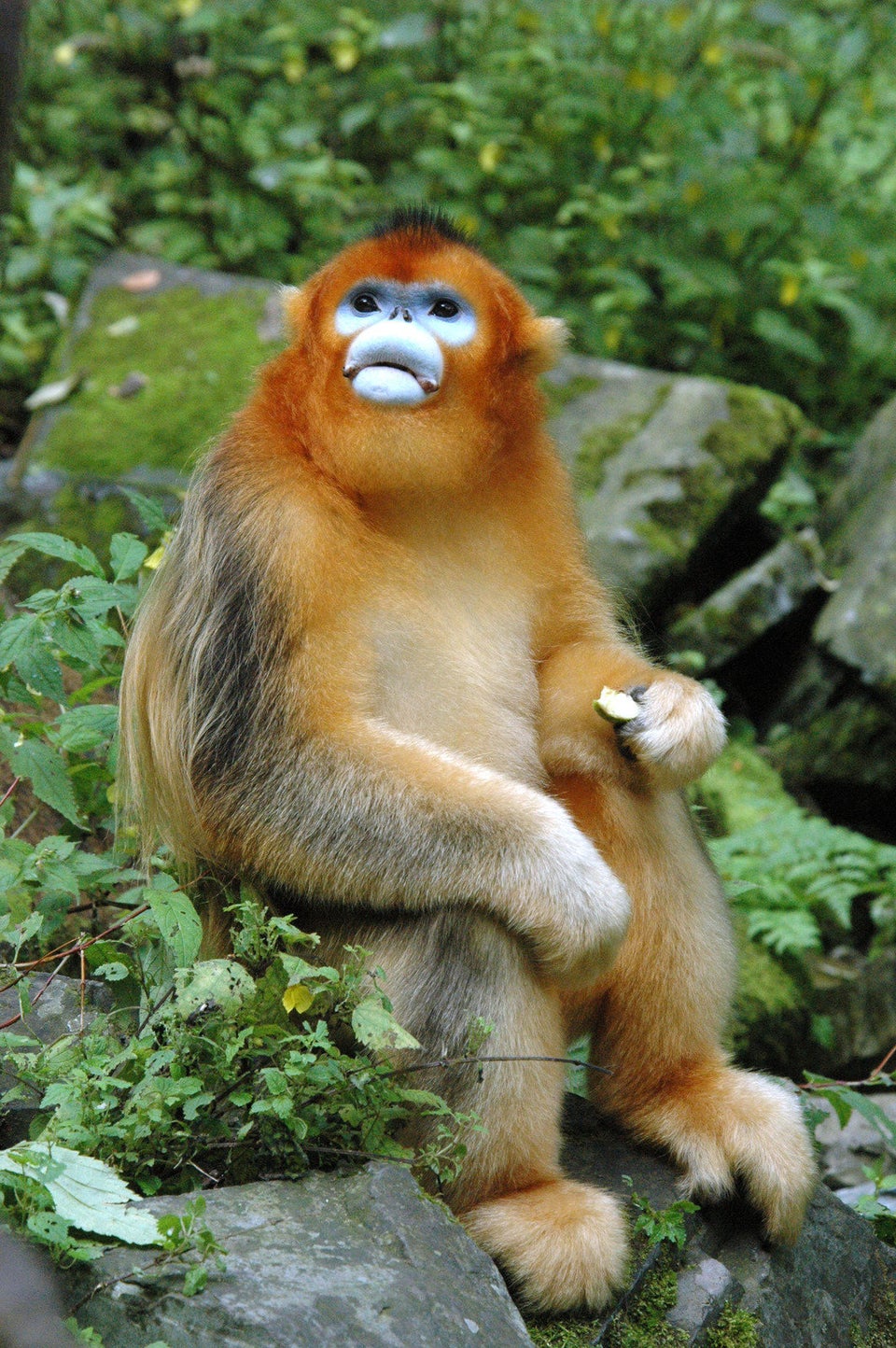
I have been fascinated by nonhuman primates ever since I was a little boy growing up in the Bronx. It's sometimes hard to explain what piqued my interest in this particular group of animals, but I believe it derived from several early influences.
One was certainly the "Tarzan" books and movies, in which the jungle hero is raised by a group of gorilla-like great apes in the interior of the African forest. Another was the fact that my mother took me to the Bronx Zoo and the American Museum of Natural History on a weekly basis, where I quickly gravitated to the primate (and reptile) exhibits. Third, as I progressed in my education, I learned that these animals were both our closest living relatives (which led to me to study biological anthropology in both college and graduate school) and the best symbols for the tropical rainforests of the world, where 90 percent of them live.
During the 1970s, I became increasingly concerned that many primates were at a growing risk of extinction, mainly because of habitat destruction, but also because of heavy hunting. Indeed, although most Westerners would be horrified at the thought of killing and eating a monkey or an ape, these animals are hunted in many parts of Africa, Asia and South America as highly desirable food, which has led to serious declines and even local extinctions in many places.
STORY CONTINUES BELOW PHOTOS
In early 1978, I worked with leading primate experts to compile the first-ever global strategy for primate conservation. In doing so, I realized that we could only be effective in conserving these animals if we knew everything we possibly could about their taxonomy, their geographic distributions and their behavioral and ecological needs.
This led me to a strong desire to compile a detailed volume on all the primates of the world -- putting in one place everything that we needed to know about them. This had been attempted a few times in the past, but never in a way that captured the full diversity of these creatures. I decided I would take on this task.
In 1980 in Bahia, Brazil, I finally met Anthony Rylands, a British primatologist with whom I had been in correspondence since 1976. He was researching lion tamarins in the Atlantic Forest, and shared my interest in creating a comprehensive volume on the primates. A year later, Anthony discovered Stephen Nash, an art student living in London, who had already illustrated a number of primate species and who also wanted to document everything that we knew about these creatures.
So began our collaboration, which has resulted in a plethora of primate-focused products over the years, from field guides and films to posters, t-shirts, stickers and brochures -- all of which have made substantial contributions to primate conservation around the world. What is more, we have been very much involved in the discovery, description and publication of species new to science, including 11 in which I have been personally involved. But, given our many other responsibilities, we never did find the time to compile our resources into one book.
In 2005, Josep del Hoyo -- founder and head of the prestigious Lynx Edicions, a Barcelona-based publisher of books on birds and other natural history topics -- contacted me about becoming a co-editor of a new eight-volume series, "Handbook of the Mammals of the World." Our series began with two outstanding volumes on carnivores and ungulates (hoofed mammals); primates were selected to be the third volume in the series. We were finally bringing our four decade-long dream to fruition.
Needless to say, the primates volume required the collaboration of dozens of specialists from around the world, a total of 57 in all. One of our principal collaborators was Matt Richardson, a Canadian writer who shares our fascination with primates and had already taken a crack at compiling a primate encyclopedia. His work was integrated into our volume, and he is one of the associate editors.
We tapped into the photo libraries of some of the best wildlife photographers on the planet to find the striking images that fill the pages of this lavishly illustrated volume. But the centerpiece of the book is really Stephen's illustrations, which depict every single known species and subspecies (and several unnamed forms) -- the first time this has ever been accomplished. Needless to say, we are delighted with the final product, as once again Lynx has done a superb job in layout, design and detailed editorial work.
So what good is a book like this? We believe it serves many different purposes. First of all, by capturing the full diversity of the primates -- from the tiny Madame Berthe's mouse lemur to the enormous mountain gorilla -- in a single volume it serves as a reference for students and researchers that should be of value for many decades to come. Second, it should help to stimulate public interest in these wonderful animals. Third, and probably most important, it serves as the raw material for the production of many new regional, national and local field guides to help stimulate the growing hobby of "primate ecotourism."
For over a decade now, I have been advocating for primate ecotourism as a new form of recreation based on the successful model of bird-watching, which is now a $38 billion industry. There is growing interest in seeing the world's tropical forests before they disappear; as the most visible mammals in these forests, primates are highly coveted by tourists.
By creating local community-based primate ecotourism enterprises, we can provide strong incentives for local people to protect these animals and their habitat while improving their own quality of life. This is already happening in places across the globe, from Brazil and Mexico, to Rwanda, Uganda and Tanzania, to India, Indonesia and Malaysia. Perhaps the most striking example of all is Madagascar, home to 103 lemur species found nowhere else on Earth.
But in order to encourage primate ecotourism, we need to provide the guidebooks, smartphone apps and other products that enable people to follow in the footsteps of bird-watchers to identify what they are seeing, list their species, and compete with their friends to see who is the greatest "primate-watcher."
Since I began studying primates five decades ago, our knowledge of primates has increased exponentially. The total number of recognized species and subspecies has increased from fewer than 200 in the 1960s to nearly 700 today, with new ones being discovered in remote rainforests every year. We are constantly learning more about the benefits that primates provide for their human cousins -- from maintaining forest cover through seed dispersal and pollination to their cultural value for many indigenous peoples.
As primate research continues, we will build on the information presented in this book and use it to continue to spread the word about the need to protect these incredible animals and their habitats -- not only for their own sake, but for the benefit of all of us.
This post was originally published on Conservation International's blog, Human Nature. It is the first in a series called "Why Monkeys Matter," which will examine how field research on primates -- not just monkeys, but apes, lemurs and more -- is illuminating their role in natural ecosystems and helping us protect the places we all depend on. Check for new posts in the series here.
Russ Mittermeier is the president of Conservation International. He is also an author, primatologist, herpetologist and chairman of the IUCN/Species Survival Commission Primate Specialist Group. Stay tuned this week on Human Nature for more posts in the series "Why Monkeys Matter."
